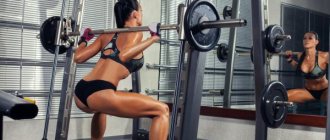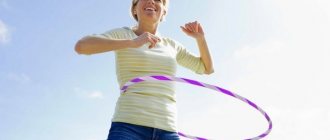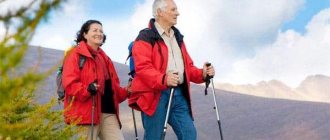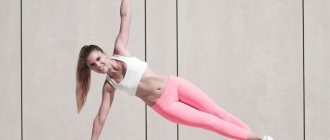The main bodybuilding exercise
Despite the fact that this exercise helps to quickly gain muscle mass, its characteristic feature is the strengthening of the knee, hip and ankle joints. It also promotes the production of natural testosterone, a muscle growth hormone.
Why is the squat called the king of exercises?
We have already noted that the exercise is considered basic due to the fact that several muscle groups are involved in the work. Squats are a heavy lifting exercise that uses free weights. Testosterone is intensely released into the blood (especially during critical loads on the body) - this is the reason for the increase in weight. In total, about 250 muscles are involved in the exercise. Let's list the main ones:
- quadriceps femoris;
- gluteal (large, medium and small);
- back;
- back of the thigh;
- leg muscles;
- abdominal planks.
On a note! By the way, about the legs. The exercise allows you to strengthen the tibialis anterior, peroneal, gastrocnemius and soleus muscle groups. Experienced trainers will tell you about stabilizing the lower back and back. Of course, with proper technology.
Injury during squats
It is worth remembering that without proper warming up and warming up, even the most developed knee joint capsules will begin to wear out and you will have to contact a specialist to avoid problems in the future.

For safer training, you need to select special equipment and a reliable partner for insurance.
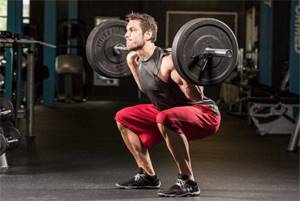
Correct squats
Physiologically, the squatting movement is natural for our body. Nature has laid the mechanism of this movement in us from birth, but with age we lose it. Children, a wonderful example of how to do proper squats. Take a look at the following photo.
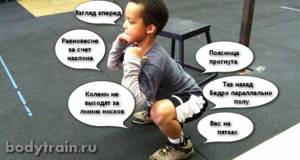
Correct body position when doing squats
Squats with heavy weights: what trains, who is suitable for
Heavy squats can be performed by anyone: both a beginner athlete and an expert in this sport.

Are your buttocks small compared to your lower legs? Do you have cellulite and hanging fat on your legs? The solution is simple - squat with a barbell. Squats with dumbbells are also suitable for fragile girls, because they will round out attractive shapes.

Rumor has it that once you start doing barbell squats, you wear out your knee joints, pop out your menisci, and after a long period of practice, you'll spit out your spine. Don't believe it! After all, everything is in your hands. If you exercise wisely, there will be no negative impact on the body.

Can squats give you abs?

The abdominal planks develop in parallel with the back extensors. Your body works in harmony, which leads to improved coordination and an overall beautiful figure. So do squats and get your belly toned. Summarize . No matter what type of squats you do, your butt, abs, and thighs will be greatly strengthened. Are you involved in athletics or team sports? And here you can’t do without squats as an auxiliary workout. The main thing is to select the depth with the help of an experienced coach.
Warm up before exercise
Before you begin squats with a barbell on your shoulders, warm up your knee joints and stretch your quadriceps, Achilles tendons, and calf muscles. The main purpose of the preliminary warm-up is to saturate the muscles and joints with blood and oxygen, and also to raise body temperature.
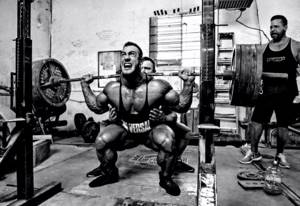
Don’t forget to do 50 simple squats and 10-15 with a bar without “pancakes” before starting the exercises. This warm-up will protect you from tearing your muscles and warm them up for better pumping.

It is better to do squats with a barbell only in a safety rack; this will help you remove the barbell from you faster if it suddenly “pins you down.” The sole of the shoe should be smooth, hard, and stable. Don't chase fashion, choose convenience.
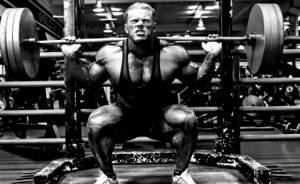
To prevent the barbell from slipping off your shoulders and causing injury, you need to wear a T-shirt or special training clothing. You should not place elevations or pancakes under your feet - this will only injure your knees.

Important tip: eat the frog
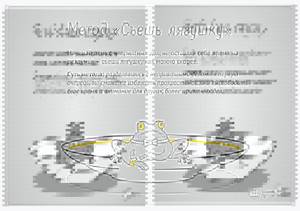
Not in the literal sense, of course, although this is not excluded. Our regular readers probably already remember this expression. “Eating a frog” means doing something unpleasant. So, do this at the beginning of the day.
It's one thing whether it's a difficult work task or an unpleasant phone call. Get rid of this matter, and it will not hang over you like a heavy burden for the rest of the day.
So we suggest you move squats to the morning. Get up early, drink a glass of water and do exercises, or better yet, a complex of exercise therapy, fortunately, there are a huge number of them on the Internet. We like them from this channel, you can choose your own to your liking.
After warming up, do your squat quota. We do not recommend starting immediately with 100, 200, etc. Leave beautiful, big numbers for later, when your technique, psyche and body itself are ready for it.
Then slowly stretch , literally 10 minutes, take a contrast shower and voila, you are full of strength!
And if you have one of our 14 healthy breakfasts and go to work on foot, then believe me, in a week you will be able to move mountains!
Methods for correct squats with a barbell
Approach the bar and grab the bar. Place the empty bar on your back, keeping in mind that it should be 15 cm lower than with classic squats. We string one, and then two or more pancakes.

We move a meter away from the counter. We take the pose of a sumo wrestler: legs wider than shoulders, toes pointing in different directions. We begin to squat - we move our pelvis back, our knees do not go beyond our toes, and we tilt our body a little forward.

Effective exercises at home for the whole body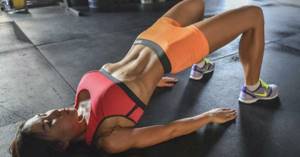
Abdominal vacuum exercise - instructions on how to do it correctly at home. All the subtleties and secrets from the pros + 100 photos

Machine leg extensions are the best technique for performing exercises in a sitting position. All the subtleties, secrets + instructions for you!

Front Squats
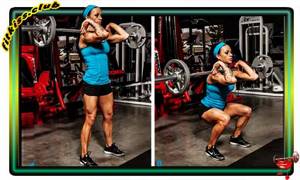
Front squats are practically a rare exercise, because they are often simply neglected, underestimating their role in the structure of the leg muscles. Although in fact, front squats are important for pumping the buttocks and hamstrings. Due to the fact that the bar rests on the front delts, the position of the back should be perfectly level. The weight of the apparatus is significantly less than when performing classic squats, however, due to the unusual position, difficulties with balance increase and the exercise remains a rather difficult and dangerous task for the back and knee joints.
Front squat technique
Just like the classics, this exercise is best done in a power rack. The bar lies on the supports, you step under it so that the bar is placed in front of your shoulders. Feet shoulder width apart. The barbell is supported with your hands either with a bend in your hands or with crossed arms. Above is a drawing with broken hands, below with crossed arms:

Using the strength of our legs, we remove the barbell from the supports and step back. That's it, you're in the starting position. Start squatting slowly and as confidently as possible until you reach parallelism with the floor. The squat is done while inhaling. After reaching the bottom point, a positive phase follows - straightening with the barbell due to the force of the legs. And here it becomes even more difficult to maintain balance.
The exercise is done with a straight back, without moving the butt back . If the pelvis is pulled back, as is usually done with classic squats, the load is redistributed and keeping oneself in balance becomes an almost impossible mission.
Front squats involve pulling your pelvis and abdomen forward and your shoulders slightly back. The back occupies an almost vertical position. There is no need to twist your wrists too much , it is ideal that the elbows are pointed up in front, and the wrists only slightly support the projectile, which rests on the front delts.
Attention! Front squats are by no means easy, and if you really want to do the exercise, then you need to take it seriously. It is very important to pay enough attention to the correct technique; slouching when performing front squats means deliberately harming your spine. Front squats are not performed with heavy weights. And I ask you very much - watch your balance.
Front squats video:
Partial squats (partial)
Squats are performed in the same way as with sumo squats, but they themselves should not be deep, that is, we go down only halfway.
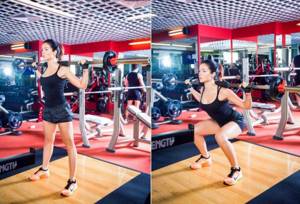
This exercise is suitable for doing with heavy weights, so as not to wear out the joint capsule and reduce tension on the back muscles.
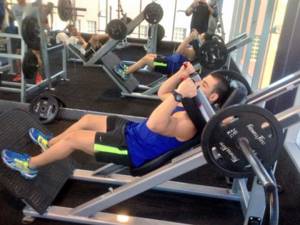
What happens if you do squats every day?
Working different muscle groups
Squats are very popular precisely because they work different muscle groups. The effect mainly affects the lower part of the body.
Different types of exercise work different muscle groups in different ways, but mainly work the quadriceps, calf muscles, buttocks, back, abs and hamstrings.
Weight loss
Daily squats are great for losing excess weight. They help speed up metabolism, so that fat begins to rapidly burn and turn into muscle.
Thanks to the work of the entire lower body, the buttocks are actively tightened and the stomach becomes flat.
Beautiful posture
When done correctly, squats strengthen your back muscles, which has a very beneficial effect on your posture.
The exercises work your upper back to help stabilize your core, whether you do the exercises with or without weights.
Prevention of sports injuries
In addition to muscles, squats help strengthen ligaments and connective tissue, which helps avoid many sports injuries, fractures and dislocations.
The flexibility and stability of the limbs increases significantly. The classic squat is the best way to strengthen muscles and ligaments. A uniform load when performing them increases body endurance and joint mobility.
Flexibility and coordination
Thanks to the even distribution of the load on the joints, daily exercise has a positive effect on their flexibility, strengthens them and relieves them from crunching during sharp turns and bends. At the same time, it is important to maintain a high range of motion of the hips while performing the exercises.
Smith machine for safe squats
The characteristic features of this exercise are safety and balance support. With parallel feet, the entire load goes to the quadriceps. Thus, there will be no back problems.
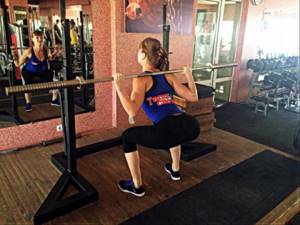
How deep should you squat?
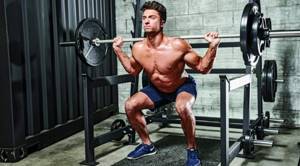
Let's say goodbye to the myth about the dangers of full squats. A healthy person who has no contraindications in the hips, knees or spine is able to withstand this exercise without harming himself. You can squat a quarter, a half, or a full depth with ease, as Powers and Salem proved in 2002. The research results are published in J Orthop Sports Phys Ther (32nd issue) on pages 141-148. The only issue to consider is the vertical external load. We are talking about axial pressure and the position of the pelvis. Pressure on the spinal discs occurs in athletes who lift weights three times their own. But the pelvis at certain angles of inclination makes the spine round, which is also not good. Therefore, the limits of flexion are selected by the coach individually, taking into account the physical capabilities of the athlete.
Squats with the barbell placed on the chest
Effectively strengthens the quadriceps, with little emphasis on the thigh and gluteal muscles.

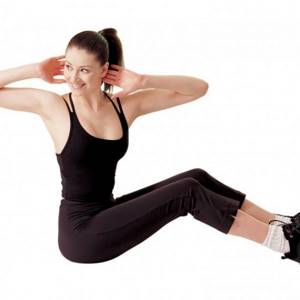
Exercises for a thin waist and flat stomach. TOP 20 best solutions + instructions with photos and videos!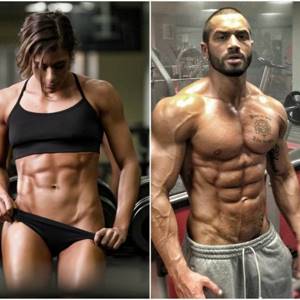
How to pump up your abs in a week at home? The best exercise system for beginners! Exercises for girls and men
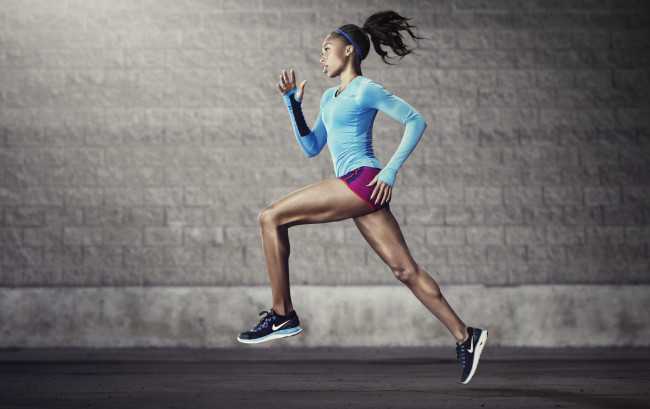
How to run to lose weight - a review of the most effective methods to lose weight in your legs and stomach. Instructions with photos and videos!
Stand under the belay bar and roll your shoulders so that they are under the bar. Remove the bar from the rack. We keep our back straight and don’t lower our head. While squatting, lower your pelvis until the top of your thigh is parallel to the floor. Then we get up and squat again.
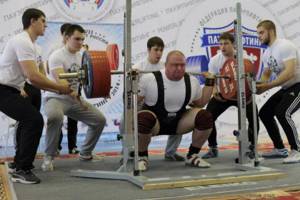
How to Squat with a Barbell Without Racks or a Power Rack
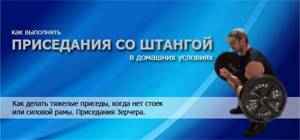
They say that without exercises with heavy weights it is impossible to build more or less significant strength and mass. One can argue with this, of course. But hardly anyone will argue with the fact that performing heavy exercises (squats, presses and deadlifts) is a quick and clear way to large muscles. And, if you want to have impressive size, then squat with a heavy barbell! This is like an axiom of modern fitness and bodybuilding. Of course, if such an opportunity exists. Is it really possible to do this at home?
This is where the difficulty lies. Even if you have a barbell and a set of plates sufficient to squat with difficulty for 3 sets of 10 repetitions (or 5 of 5 - now this is not the point), then how can you lift this barbell onto your shoulders in order to squat in the classic style?
Yes, at the initial stage you can quite throw the barbell with your hands. But at some point (as your strength increases and the weight of the bar increases), this will become dangerous, and then completely impossible. Legs are stronger than arms. And they need a much greater load to stimulate growth. You simply won’t be able to lift onto your chest, much less transfer the weight you need onto your shoulders.
That's why gyms use racks and power frames. The athlete places a barbell on them, loads it with weights, stands under the barbell, places it on his shoulders or chest and squats. He does not need to lift the barbell from the floor and throw it over himself. Of course, if you have racks or a power rack at home, then you will not have problems with squats. Because essentially you have a home gym. But what to do if there are no racks or a power frame (they say that this can even occur in some gyms)?
And here the squat option, which was used by athletes even before the invention of racks and power frames, will come to our aid. Just you, the floor and the barbell. These are Zercher squats. And crazy muscle scientist Nick Nilsson will tell you and show you how to do them. Familiar to us from the “Time/Volume Training” training program.
Zercher squats are truly representatives of “old school” strength training. Their essence is that you do not hold the barbell on your shoulders or chest. And on the bend of the elbows. This version of squats actively involves not only the legs, but also the entire cord (lower back and abdominal muscles). This is a brutal exercise!
But the bar must also somehow get into the bend of the elbows. And you are unlikely to be able to immediately grab it from the floor. This, in fact, is the idea of the entire article. How to place a heavy barbell in the desired position.
To start, you need to bend down, grab a barbell and perform one repetition of the deadlift. That is, lift the barbell off the floor and stand with it in your arms. Be careful with your back. It should be smooth and tense.
Next, you need to squat down so that the barbell is resting on your hips just above your knees. You don’t need to do anything special for this - the bar will fall there naturally if you squat with a more or less vertical body position.
Then alternately place your hands under the barbell. Exactly one at a time so that the bar always remains fixed on your legs.
The main thing here is to make sure that you place your elbows equidistant from the edges of the bar so that the load is distributed evenly on both hands. The palms of your hands should be facing you. Otherwise it will be very painful. You can also wrap a thick towel around the barbell to reduce pain in your hands.
Now... get up! The bar should be as close to the body as possible. Otherwise, there is a risk of overloading the lower back. Keep your abs and back tense. And press your feet down to the floor!
Stand completely straight and freeze for a moment. Not so much to rest. But in such a way as to fix your position and feel the tension in your body. And then lower yourself down until the bar touches your thighs.
If you're doing really heavy squats with really heavy weight. Then at the bottom point you can also pause, transfer the weight of the barbell as much as possible from your hands to your hips, and prepare your body for the next repetition in order to do it as technically and safely as possible.
When you complete the required number of reps, lower the bar to the floor. Do this in reverse order: from the squat position, alternately release your hands from under the bar, taking the barbell with a wide overhand grip. Stand up slowly and then carefully place the barbell on the floor.
This is how to do Zercher squats! This is how you should squat at home! And I want to remind you once again that if you want, you can always find a way to train to be stronger, faster, more powerful, etc. depending on your tasks. If desired, yes.
And in future articles I plan to look at how hard it is to squat if you don’t have a barbell. And consider bench press options and/or alternatives.
Dmitry Gudkov
Photo of squats with a barbell
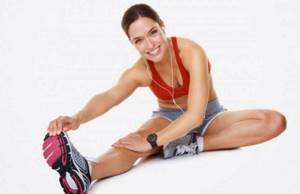
Side exercises are simple and effective methods for losing weight at home. Burn fat quickly and effectively!
The best exercises for the hips - an overview of the most effective techniques. Instructions with photos and videos + full complex from the trainer!
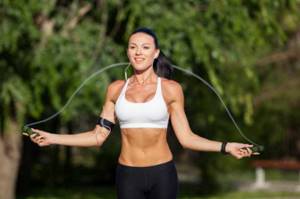
How to jump rope - expert advice and training program for beginners. Instructions on how to use a jump rope to lose weight!
